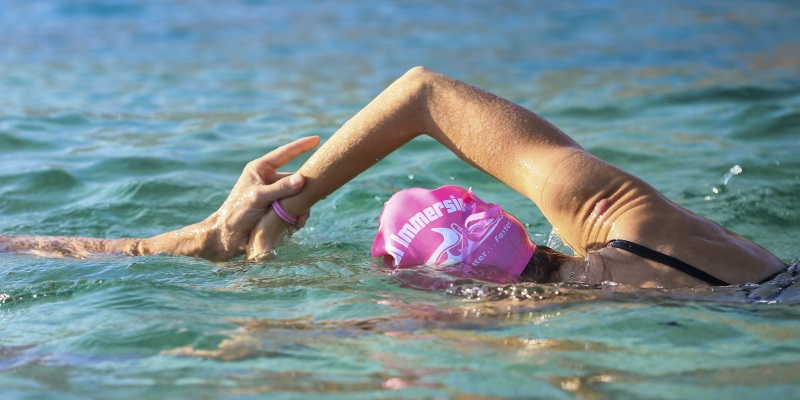Why Keep The Entry So Close?
One of our Dojo swimmers received a video analysis report recently, and one of the improvement opportunities I gave him was to make his entry closer to the shoulder. He was ready to accept this but still wondered why this was more advantageous than extending a bit farther over the surface like he sees so many swimmers do, even TI swimmers like Coach Terry in some of the videos. After writing my response I realized more of you might appreciate an answer too so I will share it here..
On the freestyle stroke, why have the hand enter closer to shoulder?

Good question, and I am glad you don’t accept the correction without understanding why.
There is a tendency for all of us to extend over the surface too far, and the faster the tempo, the more momentum and the farther that arm wants to extend before entering.
But the purpose for the arm entering sooner is that we want to deliver rotational force into the water through the extending arm as soon as streamline permits (as soon as we can shape the body into streamline to get more distance per stroke), because we need all that power to help part water molecules ahead, where our body needs to go. We have no need of parting air molecules since the body travels under water, not above.
As you observed in some videos, you will see this entry point creeping forward in any of us. But rather than a trait to imitate, it is a trait we want to resist.
It is a similar situation in breathing: we must discipline ourselves to turn the head to air and return as soon as possible, because the tendency is for us to get lazy (especially when feeling fatigued) and turn later, stay longer which ends up causing more problems. Though we see faces just beginning to touch air as the recovery arm comes out, and then see their arm go over their own goggles, this is something we want to avoid, not imitate.
In the entry, letting the arm extend above the surface is a ‘lazy’ action. When the body starts to feel fatigue the brain wants to shift its priority to energy conservation and it will pull resources away from actions that make more effective forward propulsion – in this case, it would rather extend in the air where it is easy on the arm, but extending in the water is the work that must continue if we want to make forward motion easier. Extending through air is easy… and ineffective at cutting that low-pressure path through the water for the rest of the body to slide through. This is one of the points in the stroke cycle where we must exercise great discipline to maintain optimal form, before and especially during fatigue.
At faster and faster tempos that arm will want to swing farther and farther forward – it has more momentum – but we should aim to resist and minimize this forward creep of the entry location.
